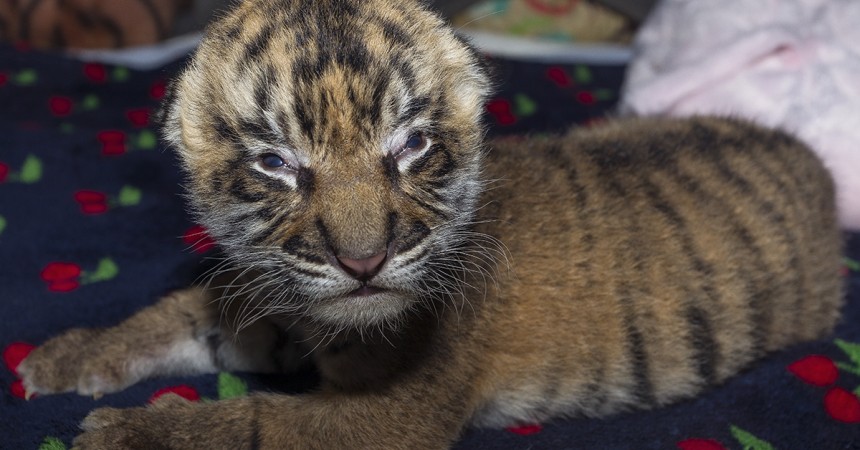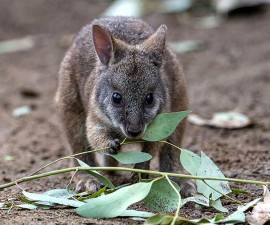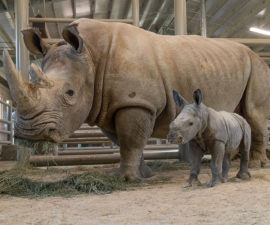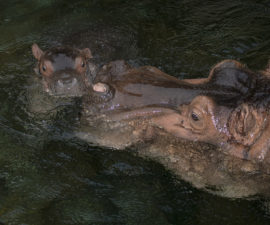Endangered Cat Being Hand-reared at Park’s Animal Care Center
A single male Sumatran tiger cub was born at 1:54 a.m. Sept. 14 at the San Diego Zoo Safari Park’s Tull Family Tiger Trail, to first-time tiger parents Teddy and Joanne. Although Joanne cared for the cub the first few days, keepers noticed he was losing weight, and felt he wasn’t receiving the proper care he needed to thrive. The Safari Park’s animal care team then made the difficult decision to hand-rear the cub. He was moved to the Ione and Paul Harter Animal Care Center at the Safari Park, where he is now being cared for around the clock.
The cub is the 26th endangered Sumatran tiger to be born at the Safari Park, and he is the first cub to be hand-reared at the park since 1984. At the care center, he’s being bottle fed seven times a day—with a formula made especially for carnivores that is easy to digest, made from goats’ milk.
“We’re very happy with our little cub’s progress; he took to the bottle and started nursing right away,” said Lissa McCaffree, lead keeper, Mammal department. “He’s been gaining weight very consistently each day, and last night he reached a milestone—he opened his eyes for the first time.”
The cub now weighs 3.36 pounds and is gaining strength in his legs, walking around his nursery enclosure. He’s also learning to make tiger vocalizations, such as meows, grunts, and low chuffing sounds. Chuffing is a vocalization tigers make as a way to express excitement, or as a greeting.
Guests will be able to see the cub in the near future at the Ione and Paul Harter Animal Care Center at the Safari Park during his bottle feeding times, which will be posted daily in front of the viewing window.

With the addition of this tiny cub, the Safari Park is now home to seven Sumatran tigers. There are fewer than 350 Sumatran tigers in the wild, and that number continues to drop. Scientists estimate that this species could be extinct in its native Sumatra by 2020, unless measures are taken to protect and preserve it.
Tigers face many challenges in the wild, from loss of habitat to conflicts with humans, but the biggest threat continues to be poaching. Tigers are killed by poachers who illegally sell tiger body parts, mostly for folk remedies. People can help protect wild tigers by avoiding products made with non-sustainable palm oil, an industry that harms tiger habitat; and by refusing to purchase items made from endangered wildlife.
Bringing species back from the brink of extinction is the goal of San Diego Zoo Global. As a leader in conservation, the work of San Diego Zoo Global includes on-site wildlife conservation efforts (representing both plants and animals) at the San Diego Zoo, San Diego Zoo Safari Park, and San Diego Zoo Institute for Conservation Research, as well as international field programs on six continents. The work of these entities is inspiring children through the San Diego Zoo Kids network, reaching out through the Internet and in children’s hospitals nationwide. The work of San Diego Zoo Global is made possible by the San Diego Zoo Global Wildlife Conservancy and is supported in part by the Foundation of San Diego Zoo Global.





